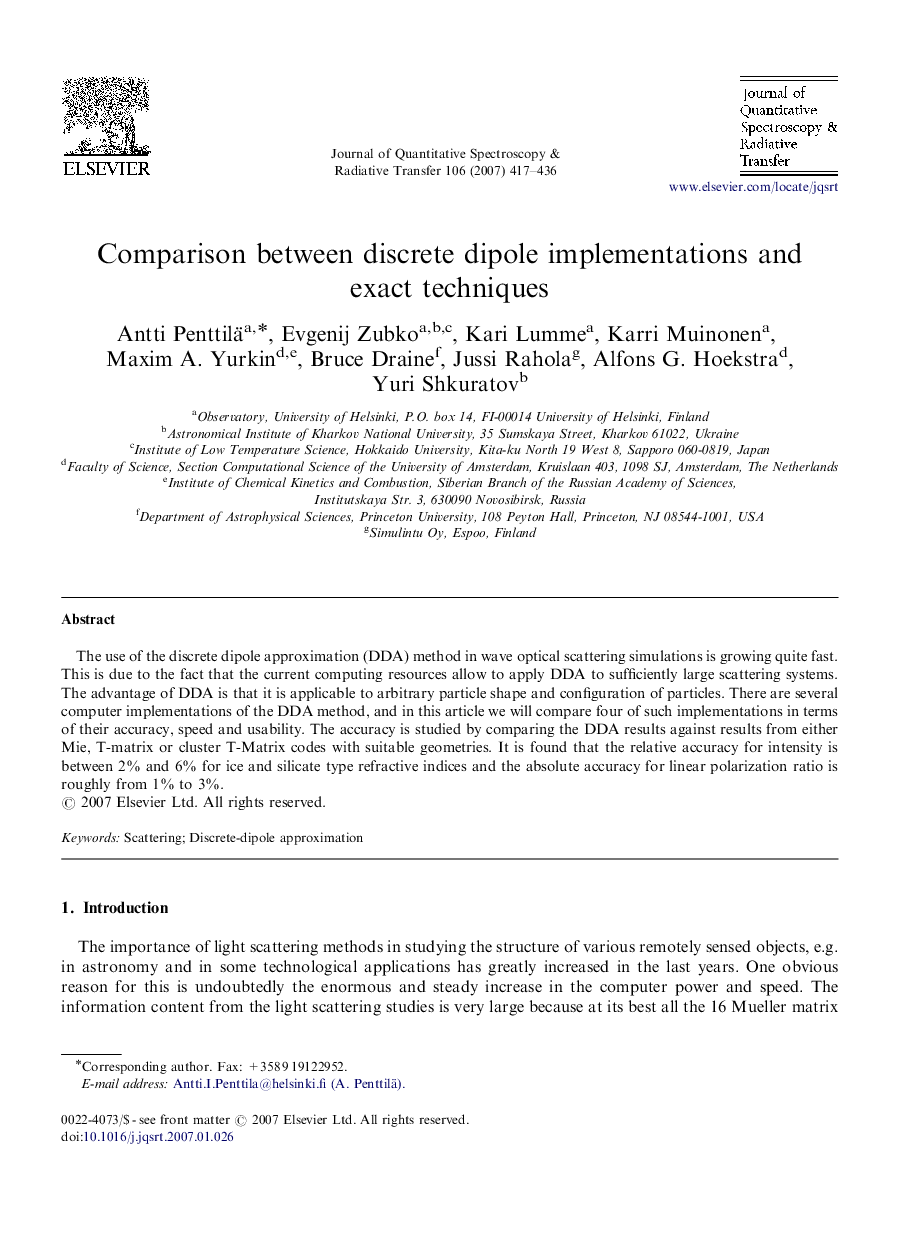| Article ID | Journal | Published Year | Pages | File Type |
|---|---|---|---|---|
| 5430332 | Journal of Quantitative Spectroscopy and Radiative Transfer | 2007 | 20 Pages |
The use of the discrete dipole approximation (DDA) method in wave optical scattering simulations is growing quite fast. This is due to the fact that the current computing resources allow to apply DDA to sufficiently large scattering systems. The advantage of DDA is that it is applicable to arbitrary particle shape and configuration of particles. There are several computer implementations of the DDA method, and in this article we will compare four of such implementations in terms of their accuracy, speed and usability. The accuracy is studied by comparing the DDA results against results from either Mie, T-matrix or cluster T-Matrix codes with suitable geometries. It is found that the relative accuracy for intensity is between 2% and 6% for ice and silicate type refractive indices and the absolute accuracy for linear polarization ratio is roughly from 1% to 3%.
